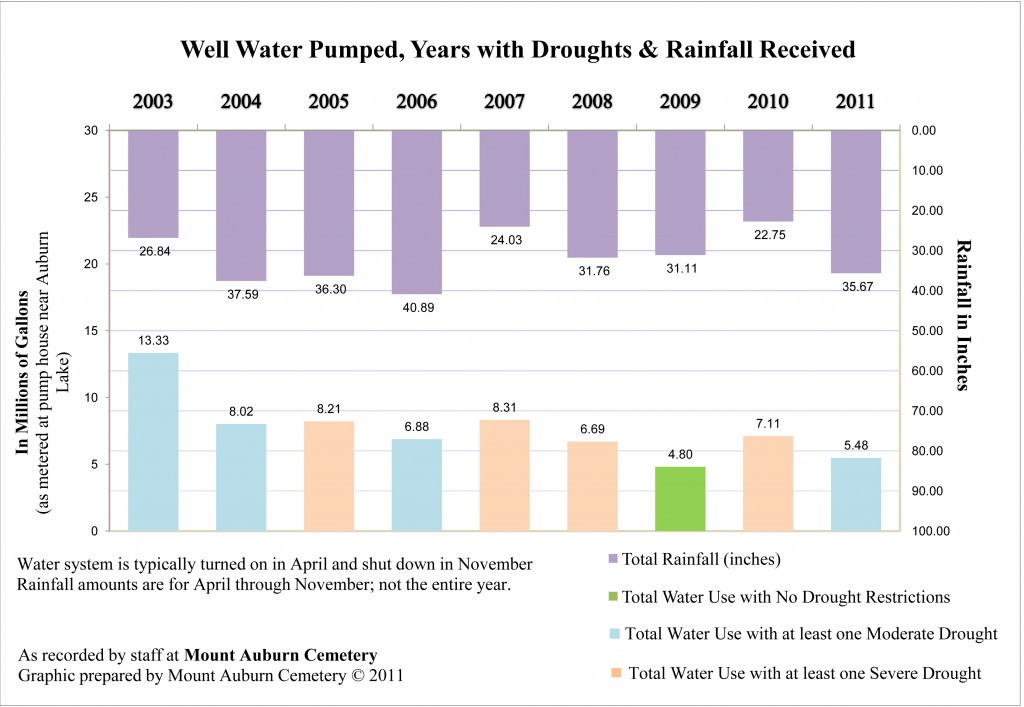What a Difference a Rain Makes
Are We in a Drought Yet?
Before the recent rain that began on April 22, this winter was unusually dry with little snow or rain, and many people were asking, are we in a drought yet? The short answer is no. Now that the gardening season is underway, Mount Auburn tracks the rainfall using the weather station located at the Operations Center, and water meter readings at its pump house where water comes from a 53 foot well adjacent to Auburn Lake from April through November on a weekly basis.
Eighty percent (80%) of the cemetery grounds is dependent upon rainfall to keep lot plantings healthy and the grass green. Only about 20% of the property is irrigated. Typically, that 20% includes new plantings for their first two or three years that are often watered with sprinklers attached to hoses connected to the standpipes located throughout the grounds, and new garden burial areas like Halcyon Garden or Birch Gardens that have installed irrigation systems.
The accompanying chart shows a comparison of rainfall during the months of April through November from 2003 through 2011 (the purple bars), and the amount of well water pumped (in millions of gallons) during those same years. Clearly, there’s a relationship between the amount of rainfall and the amount of well water used for irrigation. In 2006, for example, we recorded 40.89 inches of rainfall and 6.88 millions of gallons of water pumped for the season. The light blue bar for 2006 also indicates at least one moderate drought was recorded.
How is a drought determined?
It’s based on the amount of water in the Charles River at the Waltham dam. The USGS (U.S. Geological Survey) has installed a gauge 800 feet downstream from the Moody Street Bridge in Waltham, and Mount Auburn reviews this streamflow to determine the severity of a drought. When the stream flow is between 48 and 94 cfs (cubic feet per second), then a moderate drought may be recorded. When less than 48 cfs, a severe drought may be recorded. The final determination is the number of days at or below the threshold. The drought is declared after three days below the threshold, and then it takes seven days above the threshold to be promoted to a less restrictive level.
Prior to 2010, the Department of Environmental Protection (DEP) issued a permit allowing Mount Auburn to withdraw water from its 53 foot well. Conditions related to drought severity and restricting water use were attached to that permit. (Due to Mount Auburn’s judicious water use, a water withdrawal permit is no longer required however we continue to monitor water use). During a moderate drought, the DEP required no changes to Mount Auburn’s irrigation habits. In a severe drought however, some areas of turf could be left to go dormant – that is, turn to brown.
Prior to the April 22 rain, we were about two months ahead of the “drought schedule”, which means a drought that typically appears in July could have appeared in May. As of April 23, over 2 inches of rain has fallen at Mount Auburn. A gentle, steady rainfall that seeps into the earth is ideal, and although the April 22 has been heavy at times, it has occurred over more than 24 hours. This rain is a welcome relief.

Leave a Reply